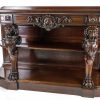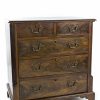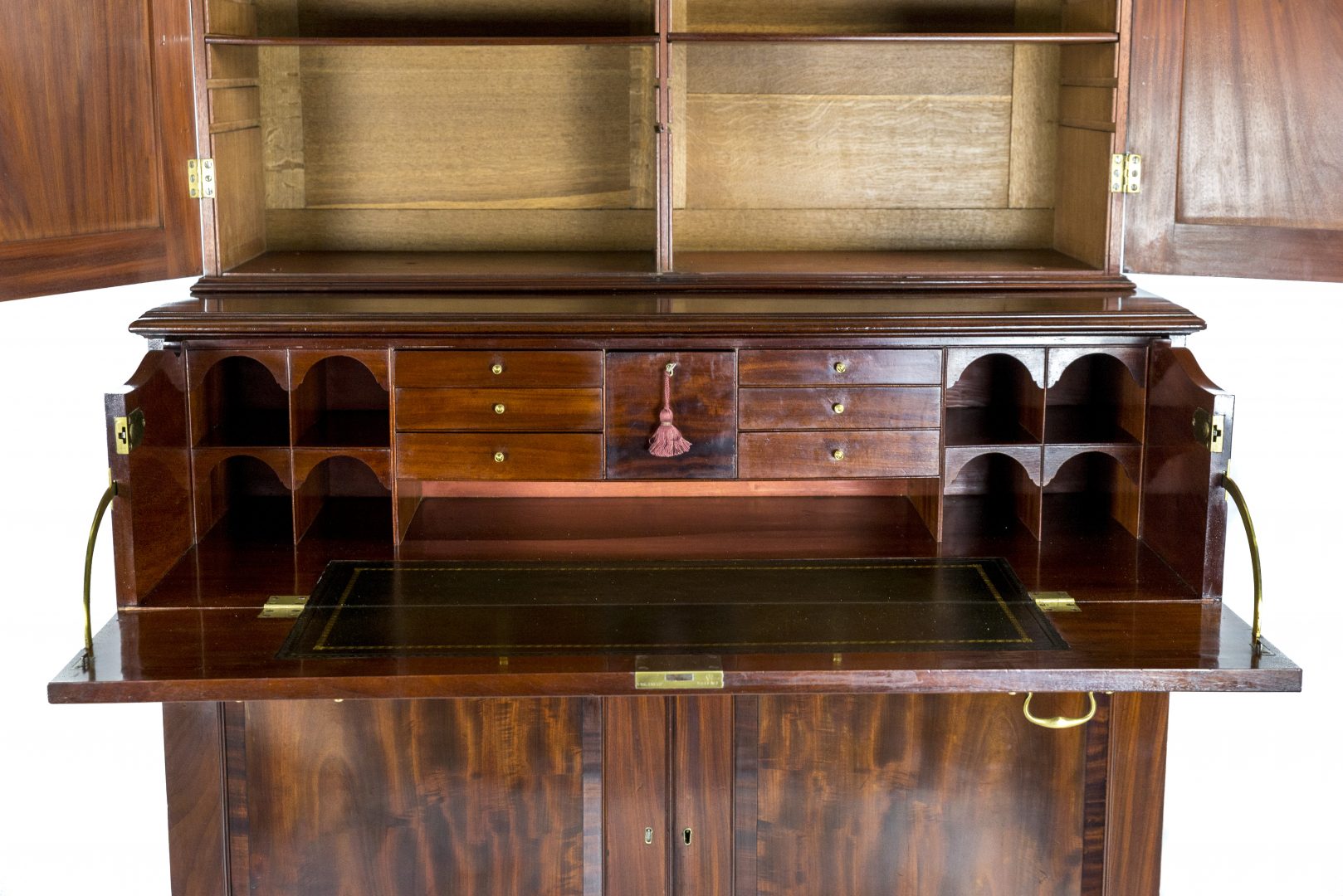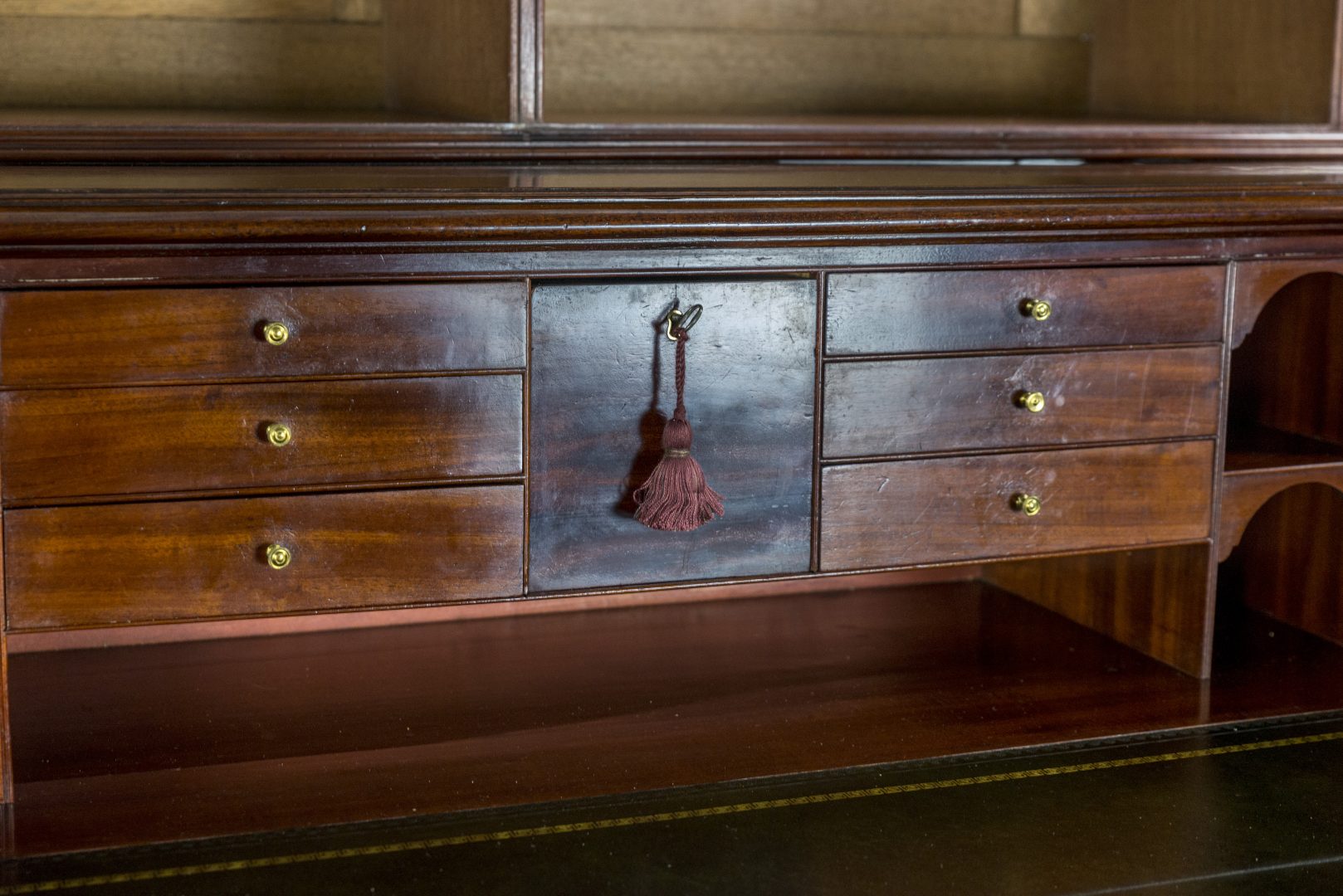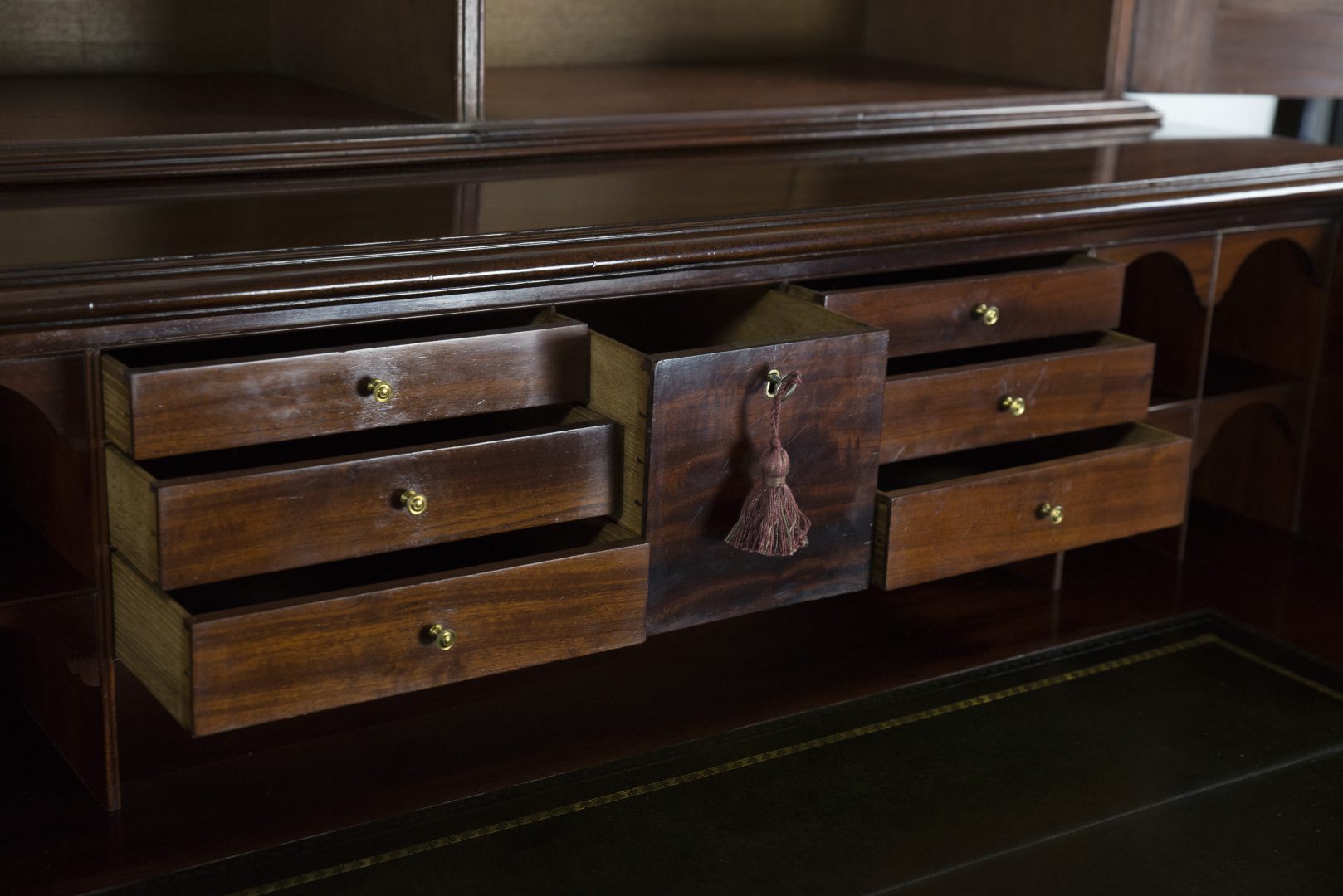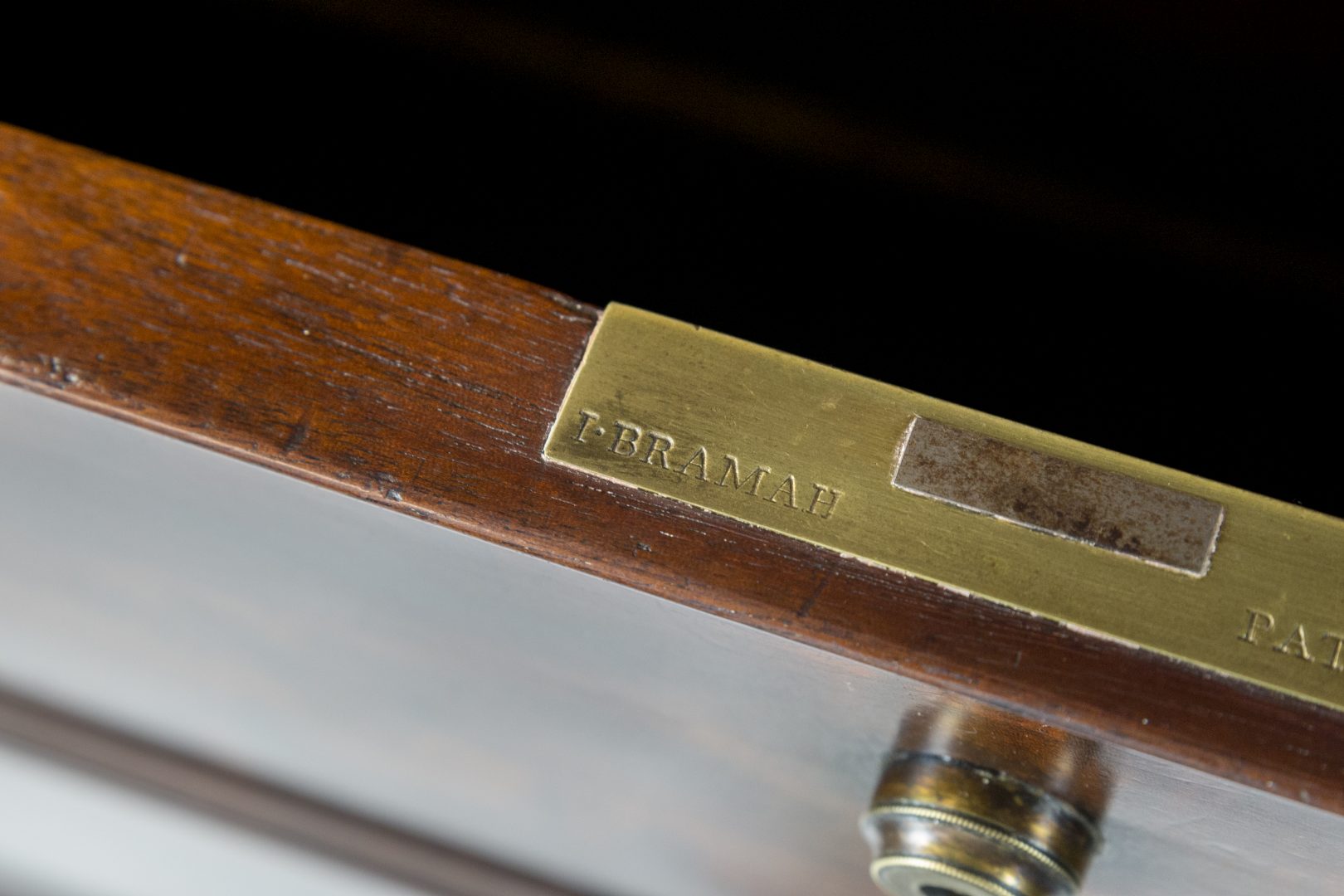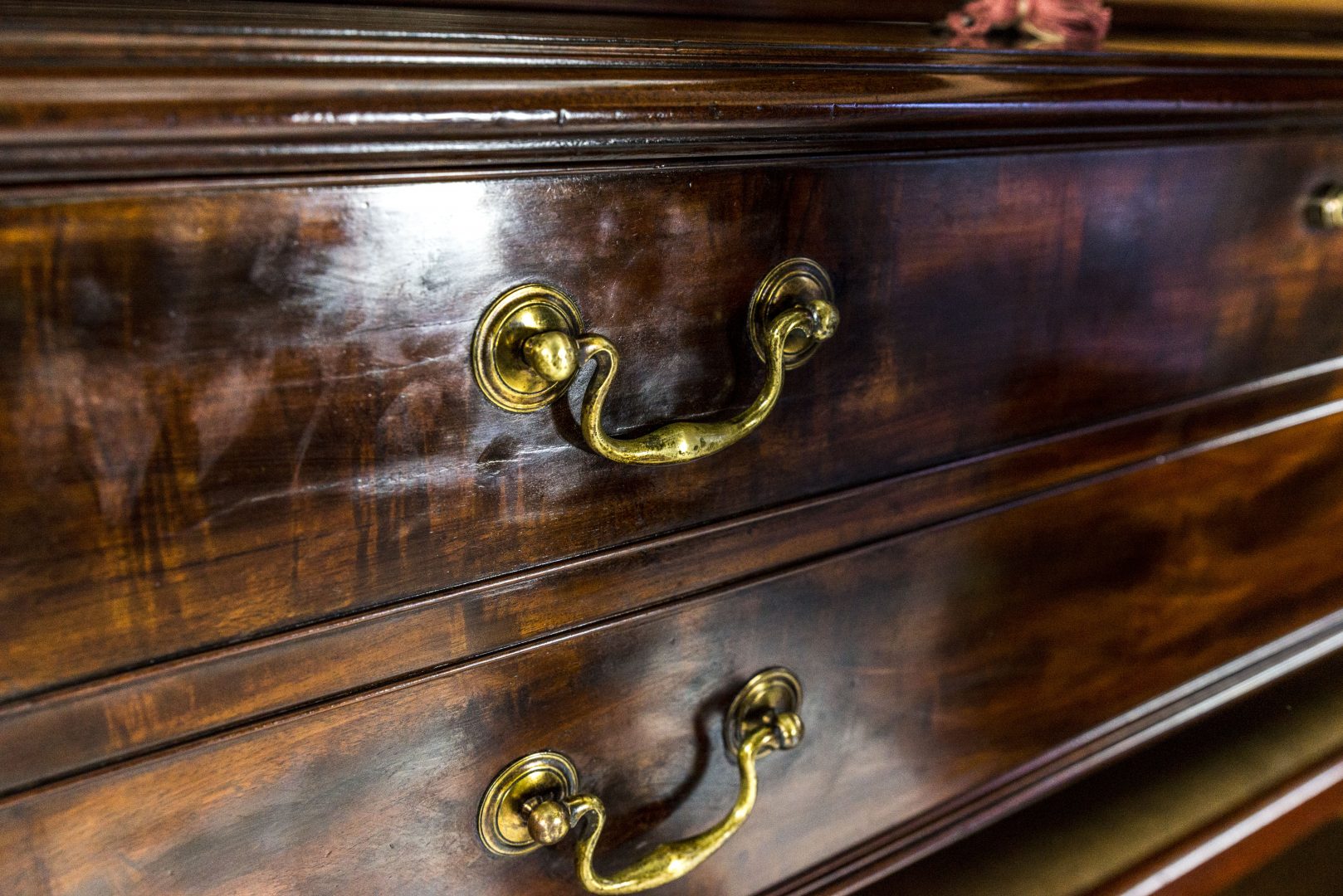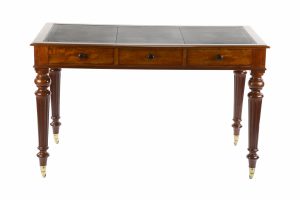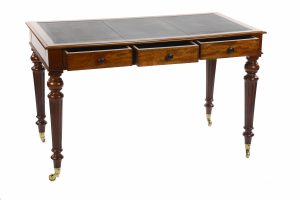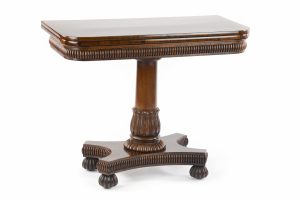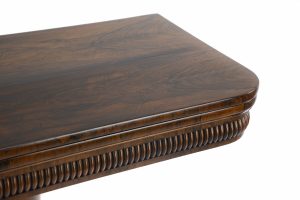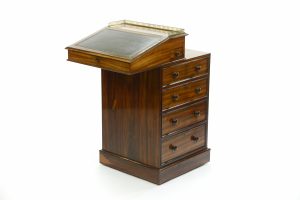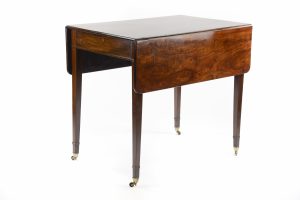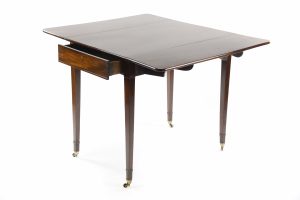An Important George III Mahogany Press Cupboard by Isaac Greenwood for Gillows
£26,000.00
SOLD
Description
An important, quality George III mahogany press cupboard by Isaac Greenwood, Lancaster, c.1780 Having an arched pediment with moulded detail above two fielded panelled doors enclosing adjustable shelves, the lower section with secretaire drawer enclosing a nicely fitted interior with pigeon holes, drawers and a gilt tooled green leather writing surface, above two fielded panelled cupboard doors enclosing linen slides, raised on shaped bracket feet, width approx 126 cm, height approx 238 cm. NB: Isaac Greenwood was apprenticed to Robert Thornley of Lancaster on 23rd February 1769 and after completing his apprenticeship began working for Gillows of Lancaster as well as making his own furniture under his own label. This particular press cupboard is illustrated along with information on Greenwood on page 240 of ‘Gillows of Lancaster and London 1730 to 1840’, volume 2, by Susan Stewart. Letters were found hidden in the back of the cabinet relating to Hebblewaite Hall occupied by a Mr Robert Kendal esq. A collection of letters and research accompany this cabinet.
Size 59 cm D x 125 W x 242 D.
Price £26,000
Condition good, commensurate with age and anticipated wear
Further detail,
The antique cabinet is actually a combination of antique desk and linen cupboard; a popular and innovative design which features in Gillows 18th century pattern books. The upper portion consists of a cabinet with fielded panel doors and adjustable shelving, above which is an arched pediment with moulded detail.
The lower section carries an old paper label that reads “Isaac Greenwood, cabinetmaker, Lancaster.” It comprises a fall-front bureau with a moulded rectangular top and baize writing surface, and a deep secretaire drawer fashioned as two elongated cockbeaded drawers with turned wooden handles. The central cupboard section is flanked by further small drawers and pigeonhole apertures; fielded panel doors conceal internal linen slides, which are raised on bracket feet. The whole is an impressive 7ft 8 inches (238 cm) in height.
Isaac Greenwood began working for Gillows after finishing his apprenticeship with Robert Thornley, another cabinetmaker with Lancaster connections. Simultaneously, he began making furniture under his own name, although this piece was commissioned for Gillows. It is featured, along with a potted Isaac Greenwood biography, in Susan E. Stuart’s iconic book: Gillows of Lancaster and London 1730 – 1840. Page 240
stock number 3034
Gillows of Lancaster and London, also known as Gillow & Co., was an English furniture making firm based in Lancaster, Lancashire, and in London. It was founded around in Lancaster in about 1730 by Robert Gillow (1704–1772)
Gillows was owned by the family until 1814 when it was taken over by Redmayne, Whiteside, and Ferguson; they continued to use the Gillow name. Gillows furniture was a byword for quality, and other designers used Gillows to manufacture their furniture. Gillows furniture is referred to by Jane Austen, Thackeray and the first Lord Lytton, and in one of Gilbert and Sullivan’s comic operas.[3][a] In 1903 Gillows merged with Warings of Liverpool to become Waring and Gillow and although the furniture remained of a high quality it was not as prestigious.

